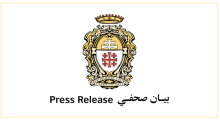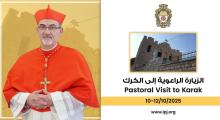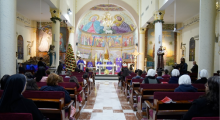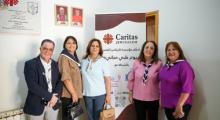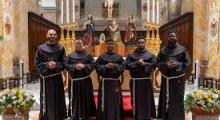Issued by the Catholic Center for Studies and Media - Jordan. Editor-in-chief Fr. Rif'at Bader - موقع أبونا abouna.org
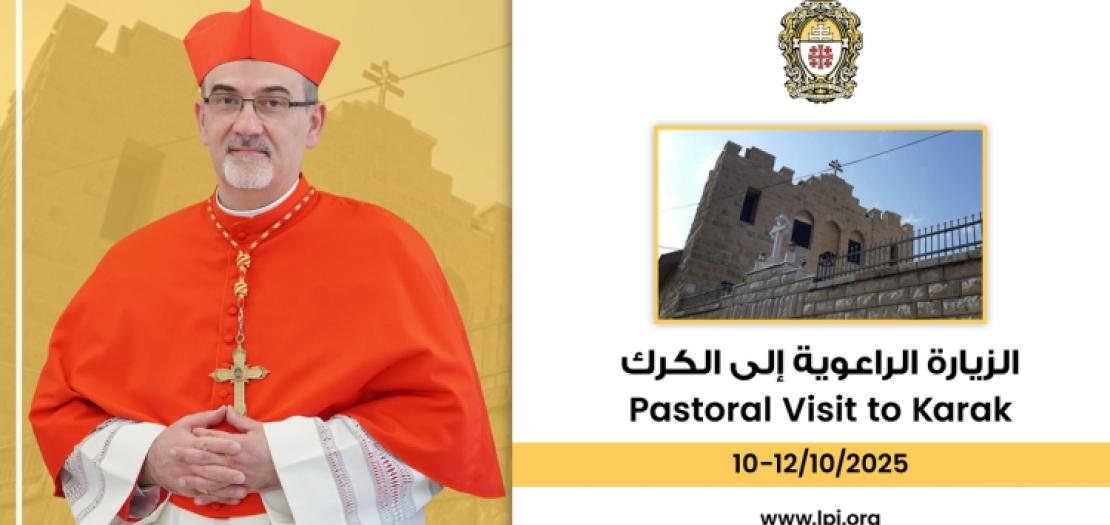
On Friday, October 10, 2025, His Beatitude Cardinal Pierbattista Pizzaballa, Latin Patriarch of Jerusalem, will begin his pastoral visit to the Latin Parish of Karak - Jordan, continuing until Sunday, October 12. On this occasion, and in celebration of the 150th anniversary of the founding of Our Lady of the Rosary Latin Parish of Karak, this report offers a look at the parish’s rich history and current pastoral life.
Karak: The city of the fortress and faith through the ages
Located about 125 kilometers south of Amman and standing at nearly 1,000 meters above sea level, Karak tells the story of successive civilizations — from the Moabites, who made it their capital, to the Byzantines, who called it “Kark Moab.” It is also mentioned in the Bible under various names, including “Kir Moab” and “Kir-Hareseth”, and its name has long symbolized strength and glory, just as its imposing fortress, which overlooks the valley of Moab.
At the end of the second century B.C., Karak lost its status as a capital and was annexed to the Nabataean Kingdom, which stretched from Petra to Damascus. When the region was incorporated into the Roman province of Arabia in 106 A.D., the great Roman road connecting Amman and Aqaba was built, bringing prosperity to Karak and other towns along this historic route.
Karak was historically governed by clans, most of which were Muslim, alongside several Christian clans. Relations between the two communities were generally cordial, despite occasional disputes and periods of hardship. When the traveler Johann Ludwig Burckhardt visited Karak in 1812, he estimated the population at about 400 Muslim families and 150 Christian families. The Christian community was composed of nine clans: Haddadin, Azzizat, Hejazin, Akkasheh, Zrayqat, Madanat, Beqaein, Halsa, and Ma’ay’ah.
A history of Christian presence in Karak
Christian presence in Karak dates back to the Byzantine era, when the city served as an episcopal center and hosted several churches. Despite periods of decline, the Greek Orthodox community preserved the Christian presence through St. George Church, which remained a place of worship for both Christians and Muslims. However, as the liturgy continued to be celebrated in Greek, knowledge of the faith among the local faithful gradually weakened over time.
During the 19th century, trade between Karak and Hebron flourished. Caravans transported livestock, wool, and wheat from Karak and returned with goods from Jerusalem. Some residents of Karak even moved to Palestine, particularly to Beit Jala, where they met Father Jean Morétan. Impressed by his pastoral work and his respected standing in the community, they asked him to contact the Patriarch to send them a priest like him. Their request was supported by a letter of recommendation from the local leader, Sheikh Mohammad Al-Majali.
The Founding of the Latin Parish. In 1875, the Latin Parish of Karak was founded through the efforts of the Latin Patriarchate of Jerusalem and missionary priests such as Fr. Yousef Ghatti and Fr. Iskandar Maccagno, who responded to the local community’s plea for a resident Arab priest. Although the parish faced many challenges in its early years—including tribal conflicts, famine, persecution, and lack of security—the priests remained steadfast in their mission despite threats and hardship. Part of the community migrated to Madaba in 1880 after a tragic tribal incident, while others chose to stay and preserve their faith.
Despite wars, famines, and restrictions imposed by Ottoman authorities, the priests continued their pastoral service quietly yet resolutely. By the early 20th century, the church and school had been built with the coming of the Rosary Sisters to Karak. Over time, Our Lady of the Rosary Parish in Karak became a lasting symbol of perseverance and faith, and a living witness to the enduring Christian roots of southern Jordan.
The parish today
This year, Our Lady of the Rosary Parish in Karak celebrates its 150th anniversary. The parish is one of three Latin Patriarchate parishes in the governorate, along with those of Ader and Smakieh. Its current parish priest, Fr. Alaa Ba’eer, was appointed in mid-June of last year.
Between sixty and seventy Christian families are currently registered in the Parish of Karak. Although some members now live in Amman while still maintaining their homes in Karak and joining the Mass whenever possible, a sign of their strong connection to the parish.
Although Christians are a minority in Karak, the city is home to three apostolic churches: the Latin, Melkite (Greek Catholic), and Greek Orthodox communities, with the Latin parish being the largest among them.
- Pastoral Groups
The parish has an active youth presence, including various age groups: university, working, secondary, preparatory, and children’s groups. Throughout the year, the youth groups organize a variety of activities such as the annual bazaar, liturgical celebrations, summer family gatherings, and inter-parish meetings.
The parish also has a six-member choir and a group of altar servers who regularly assist during Mass and participate in activities organized by the Latin Patriarchate and the Liturgical Office, strengthening their sense of belonging and ecclesial unity.
There are currently no sisters serving in the parish, as the Rosary Sisters departed at the end of last year due to a shortage of religious vocations. However, parish life continues thanks to the dedication of those who love to serve, the youth, and committed families.
There is no formal parish council, but the parish priest regularly meets with the elderly of the parish for consultation and coordination of pastoral work to serve the community effectively.
-School: The parish runs a kindergarten and a school up to the fourth grade, providing children with solid Christian education and moral formation.
-Healthcare: Next to the church stands the Caritas Karak Center, which serves needy families in the city. Karak is also home to the Italian Hospital run by the Comboni Sisters, one of the main healthcare institutions in the governorate.


